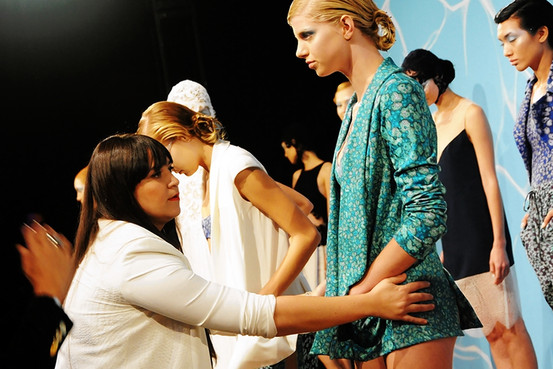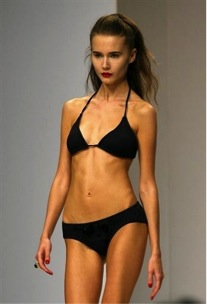Does America promote unhealthy models?
In a global rise of eating disorders, America seems to be the problem as well as the solution. Mr. Barkan, an Israeli fashion photographer, claims American advertising is the reason for a growing epidemic of eating disorders. In The Spartanburg Harold, Barkan shares his experience with anorexic models and his insight on the alarming rise of eating disorders. Throughout his career, several girls have come to Barkan wanting his help to start modeling. Barkan instead makes sure the girls healthy, even if that means taking them to the hospital and supervising meal times. The death of one of his models from anorexia nervosa early on in his career is what drives him to advocate for a healthier condition in the industry. According to Barkan’s research, three percent of Israeli girls ages 11 to 18 suffer from eating disorders, which is a rate very similar to other developed Western countries.
Mostly due to Barkan’s reform movement, a new law in Israel called the ‘photoshop law’ requires models in Israel to maintain an 18 percent Body Mass Index (BMI) level, which is the lowest percentage level that can be maintained while still remaining healthy. For a 5'11" female, an 18 percent BMI is roughly 130 pounds. The law also bans photo editing to make models appear thinner.
Runway models at New York’s Fashion Week said they did not feel pressured to stay super thin, but they admit the pressure comes with high fashion. One model who now works as a representative for a make-up company said, “Being a model has really only made me healthier. You just have to be very conscience of what you eat. I have to eat a lot of fruits and vegetables, I can’t just go out and get a big mac with fries.”
But when does being highly conscience become obsessive? Are these models really consuming enough nutrients from the food they consume or could they be suffering from an eating disorder under the guise of health?
Daria Keller, who is part of Barkan’s healthier models campaign, said when she was modeling she would eat one apple over the period of three days. Eating nothing but apples is certainly a diet Steve Jobs would approve of, but 40 calories a day would not be sanctioned by any nutritionist.
Jamieson Hill, a previous runway model for Ford Models and current Williamsburg resident, said the industry is far less focused on stick-thin bodies than it used to be in the 60’s and 80’s: “That high-fashion skinny doesn’t really last for girls past 12 when their bodies start to change. What does last is their personality. People would much rather work with a great personality, and those are the people getting hired and succeeding.”
This may be true; America may be a leader for establishing a healthier industry, focused more on the person than the cookie-cutter body agencies have looked for in the past.
The site of Ford Models, however, still profiles girls all with twenty-four inch waists and hips no larger than thirty-five. These are the same measurements that qualify as a size ‘zero’ for most commercial clothing lines, including J.Crew and Banana Republic. For those keeping score at home, it does not seem like the industry has moved away from the ‘size zero phenomenon.’
And the desire for a super thin body has not disappeared. Everyday, advertisements of perfectly photoshopped woman flaunting their tiny bodies serve as a reminder to the viewer that they are far from reaching perfection. Is America really helping create a healthier working environment for models or are they propagating their distorted views of beauty and health for the rest of the world?


